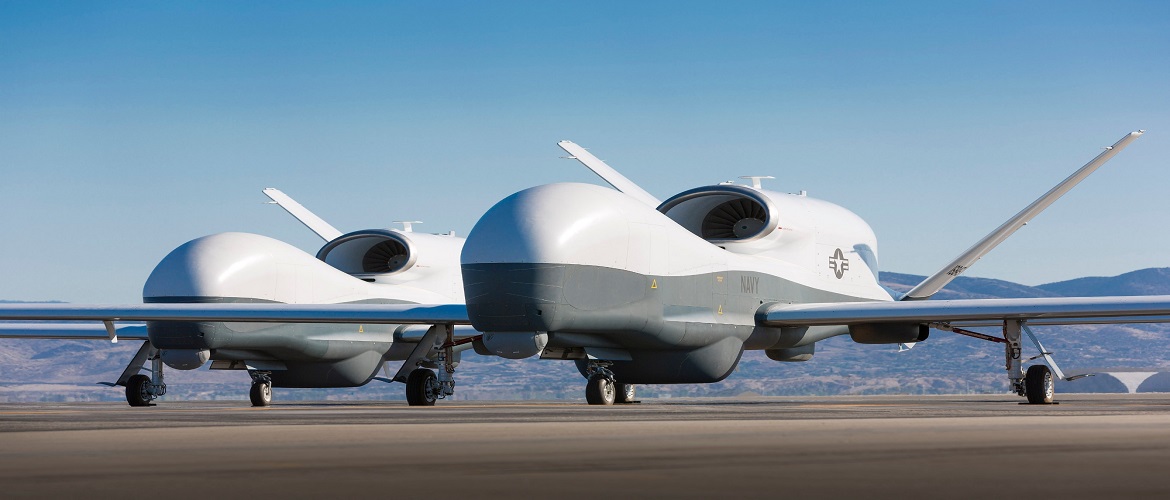Innocuous Drones And Lethal Standoff Weapons
February 17, 2021 | Expert Insights

The largest disruption of global oil supplies on record was not caused by a bomber strike or fast jet raid. Instead, the devastating attack, which cut oil production and rocked energy markets, was brought about by the precise deployment of an unmanned swarm of low-cost drones and cruise missiles. An equivalent of a do-it-yourself kit was enough to blow up half of Saudi Arabia’s crude oil output on September 2019 supposedly deployed by Houthi rebels in Yemen. Consequently, the oil prices shot up by 10 per cent in a day.
SWARMS
Drone swarm technology – the ability of drones to autonomously make decisions based on shared information – has the potential to revolutionize the dynamics of conflicts. Drones could disperse over large areas to identify and eliminate hostile surface to air missiles and other air defences. Likewise, swarms of drones could search the oceans for adversary submarine. Security swarms equipped with radiological, chemical, biological and nuclear ( CBRN ) detectors, facial recognition and other capabilities offer defences against a range of threats on the homeland security front. Drones embedded with AI will redefine warfare by 2030. China is one of the leading players in this field, and India will have to do much to keep up with international trends. Today over 181 nations are engaged in manufacturing high-quality drones or UAVs, with of course USA, Israel, and China being the top ones. Drones come in all sizes and for a variety of purposes from small payloads to large high altitude platforms.
The new concept now being experimented with in many air forces involves a single pilot in a conventional aircraft controlling various drones, UAVs and cruise missiles to employ against selected targets. This enables the human-crewed aircraft to maintain a safe standoff distance from heavily defended targets. The outstanding feature of this marriage between man and machine is that both components talk to each other, with one designating targets and others initiating the attack.
The future is looking at swarms of 50 to 100 autonomous drones converging on single or multiple targets, overwhelming the air defences.
INDIAN INITIATIVE
The Indian private industry is closely cooperating with the Indian armed forces and HAL to catch up the fast-developing drone technology. In the context of falling squadron strength of the Indian Air Force, and the high cost of manned platforms, drones provide a plausible alternative to bolster the air force's striking power.
The plan to develop indigenous swarming drones is part of the Combat Air Teaming System (CATS) project with three distinct elements. In addition to the ALFA-S swarm drones, a robotic wingman, meant to accompany a crewed fighter jet into combat is also being developed. The third element of CATS is an ultra-high-altitude drone capable of the endurance of up to three weeks at a stretch while providing real-time images and video.
Long duration drones, powered by solar energy cells packing their entire surface area can orbit at great heights up to the stratosphere and act as pseudo geostationary satellites beaming signals back to earth. These will be at a fraction of a space-based satellite cost and can be brought back to base for repairs and upgradations.
Squadron Leader Sameer Joshi (Retd) CEO of New Space Research and Technologies, a Bengaluru based start-up, has teamed up with state-run Hindustan Aeronautics Ltd (HAL). Jointly they are looking at next-generation aviation technologies and working furiously towards the first Indian swarm drone. The drones have a name - ALFA-S or Air-Launched Flexible Asset (Swarm). These autonomous drones can either work together in cohesion for various tasks like surveillance or even attack and can also peel off and undertake independent missions on individual targets.
The drones are fully networked with each other through electronic data links. They detect targets such as surface-to-air missile units, enemy radars, and aircraft on the ground using their infrared and electro-optical sensors. Each drone is designed to be smart enough to 'learn' about what it detects before targets are assigned to individual drones.
A lot of the technology being developed in-house presently is not available in the market. The United States, China, Russia, and a few European countries are also in the process of creating the first elements of their swarm-drone strike packages.
THE WAY AHEAD
A debate is needed to evolve defence procurement away from expensive multi-decade programs to more timely and agile practices that leverage the latest commercial technology. With a different operating concept, and an acceptance of lower technological sophistication and optionality, a larger and cheaper jet fleet – or indeed drones – might be suitable.
Unmanned aerial vehicles (UAV) or drones are coming of age and married with AI; they are proving to be extremely lethal weapons of war, both in the conventional sense as also in 5th G warfare. The recent attacks on Saudi oil installations and the assassination of Qasem Soleimani vindicate their effectiveness.
Maritime drones will spur greater man-machine teaming as part of the Third Offset strategy conceived by countries like the US. The key to this is to allow machines to aid human decision-making to work more efficiently.
It is encouraging to see that the Indian government is actively seeking private participation with a clutch of private Indian companies making drones and developing UAV technologies.








Comments